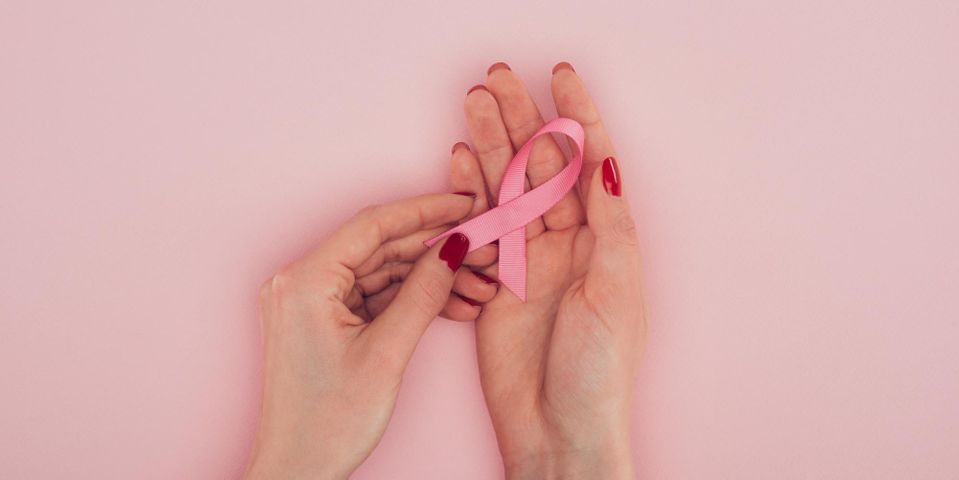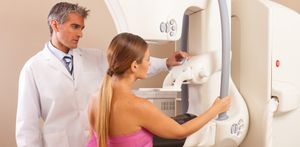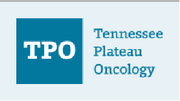Why Early Detection Is Vital to Curing Breast Cancer

October is Breast Cancer Awareness Month, and for over 30 years it has brought to light the prevalence of this disease around the world. Global investment in research and advocacy is vital to saving lives from this cancer, which kills someone every 50 seconds globally. For women everywhere to join the fight, it’s important to be educated regarding the likelihood of breast cancer, how to proactively detect it, and what symptoms to look for on your own body.
Breast Cancer by the Numbers
Educating yourself on the frequency of breast cancer is a key step to understanding early detection practices. Women have a 1 in 8 chance of getting it on average, and it’s the number one cause of cancer death around the world. While rarer, men are also susceptible to the disease; they have a 1 in 1,000 chance of getting breast cancer. You’ll find over 6 million survivors globally, and in 2018 alone, there will be over 2 million new cases recorded.
In the U.S. specifically, the statistics are staggering:
- In the United States alone, there are 3.5 million survivors of breast cancer.
- A woman is diagnosed every two minutes.
- In 2018, more than 260,000 new cases are expected to be diagnosed in women, 2,500 new cases are expected in men, and 41,000 women and men are expected to die from the disease.
Why Early Detection Is So Important
Diagnosing breast cancer as early as possible is the best shot you have a beating it. In fact, improvements in early detection and treatment have led to a 39% decline in breast cancer deaths in the U.S. since 1989. Knowing what genetic risk factors you have as well as finding a mass when it is virtually undetectable visually can make the difference when the time comes for treatment.
Tests for Early Detection
 Since the risk factors for the disease are as simple as being a woman and getting older, there are a couple tests that must be done regularly as you progress into your forties and sometimes even earlier:
Since the risk factors for the disease are as simple as being a woman and getting older, there are a couple tests that must be done regularly as you progress into your forties and sometimes even earlier:
- Mammograms: This breast x-ray is the most common way to detect breast cancer in a person who doesn’t show any warning signs or symptoms. They can find cancers when they are still small, making your chances at survival much higher. Mammograms are also used as a follow-up for an abnormality found during a screening mammogram or clinical breast exam. The National Comprehensive Cancer Network recommends an annual mammogram for women of average risk of breast cancer starting at age 40. Women at higher risk should receive one annually from the year they discover their susceptibility.
- Testing for genetic mutations: A cause of breast cancer that can give you a high risk of the disease is a genetic mutation, like the BRCA1 or BRCA2 mutation. These specific mutations increase your lifetime risk from around 12% to about 45 to 65%. If you have a family history of breast cancer, your doctor will likely test for this risk factor.
- Clinical breast exam: If you are at a higher risk for the disease, your doctor will recommend a clinical breast exam every six to 12 months to keep an eye out for possible abnormalities of your breast, underarm, or clavicle area.
Other diagnostic tests include biopsies, breast MRIs, and ultrasounds.
Early Signs of Breast Cancer
Change in Skin Texture
This symptom is caused by an inflammation of the skin cells on your breast. The texture will become like a peeling sunburn, a callus-like thickness, or dimpled skin, which looks like the surface of an orange peel.
Redness
If you have a bruise-like red-purple tint to your breast, but you haven’t undergone any physical trauma to warrant this bruise, have your breast examined. This also applies to a bruise that will not go away after a couple days.
Nipple Discharge (Besides Breast Milk)
If nipple discharge happens under any circumstance besides breastfeeding, you should notify your doctor. This symptom can exist due to other issues like infections, thyroid disease, and side effects from a new birth control, but it can sometimes signify breast cancer.
Swollen Lymph Nodes
Your immune system uses lymph nodes to capture potentially harmful cells before they can spread. When you have breast cancer, these pockets of tissue at your underarms and clavicle can swell. While this is a symptom, lymph node swelling can be caused by a number of illnesses—even a simple cold—but have it checked out by a physician regardless.
Nipple Retraction
Cell changes behind the nipple can cause it to cave inward. This symptom may also cause breast pain, which can be attributed to a variety of factors, but as with all possible symptoms, it’s better to be safe by consulting with a doctor.
New Lump or Mass
This symptom is the most visible sign of breast cancer. An abnormal mass of any shape or size, whether hard with irregular edges or a soft, well-rounded lump, should be immediately examined by a doctor. A new mass can also manifest itself as general swelling of the breast as well.
If you have any questions about your susceptibility for breast cancer or fear you have found a potential symptom on your breast, a trusted oncologist will provide answers. Tennessee Plateau Oncology - Dirk Davidson, M.D., offers educational support and cutting-edge techniques that emphasize prevention, early detection, and treatment of cancer. Based in Crossville, TN, this treatment center has assisted patients with a variety of cancer diagnoses receive personalized care for their illness for nearly 20 years. To schedule an appointment with a physician, call (931) 484-7596 or visit them online.
About the Business
Have a question? Ask the experts!
Send your question

